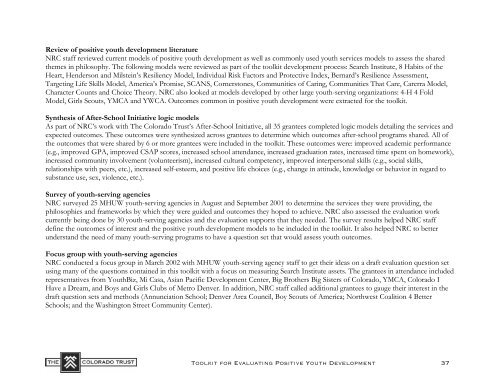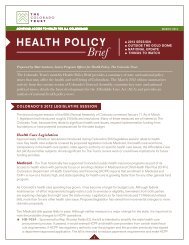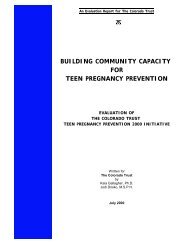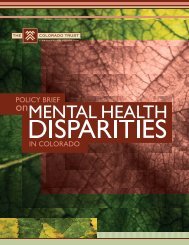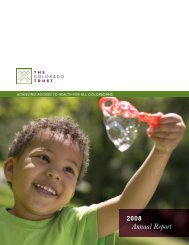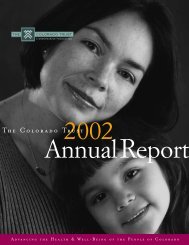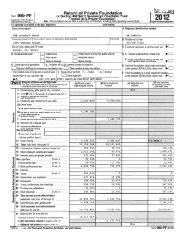After-School Initiative's Toolkit for Evaluating
After-School Initiative's Toolkit for Evaluating
After-School Initiative's Toolkit for Evaluating
Create successful ePaper yourself
Turn your PDF publications into a flip-book with our unique Google optimized e-Paper software.
Review of positive youth development literature<br />
NRC staff reviewed current models of positive youth development as well as commonly used youth services models to assess the shared<br />
themes in philosophy. The following models were reviewed as part of the toolkit development process: Search Institute, 8 Habits of the<br />
Heart, Henderson and Milstein’s Resiliency Model, Individual Risk Factors and Protective Index, Bernard’s Resilience Assessment,<br />
Targeting Life Skills Model, America’s Promise, SCANS, Cornerstones, Communities of Caring, Communities That Care, Carerra Model,<br />
Character Counts and Choice Theory. NRC also looked at models developed by other large youth-serving organizations: 4-H 4 Fold<br />
Model, Girls Scouts, YMCA and YWCA. Outcomes common in positive youth development were extracted <strong>for</strong> the toolkit.<br />
Synthesis of <strong>After</strong>-<strong>School</strong> Initiative logic models<br />
As part of NRC’s work with The Colorado Trust’s <strong>After</strong>-<strong>School</strong> Initiative, all 35 grantees completed logic models detailing the services and<br />
expected outcomes. These outcomes were synthesized across grantees to determine which outcomes after-school programs shared. All of<br />
the outcomes that were shared by 6 or more grantees were included in the toolkit. These outcomes were: improved academic per<strong>for</strong>mance<br />
(e.g., improved GPA, improved CSAP scores, increased school attendance, increased graduation rates, increased time spent on homework),<br />
increased community involvement (volunteerism), increased cultural competency, improved interpersonal skills (e.g., social skills,<br />
relationships with peers, etc.), increased self-esteem, and positive life choices (e.g., change in attitude, knowledge or behavior in regard to<br />
substance use, sex, violence, etc.).<br />
Survey of youth-serving agencies<br />
NRC surveyed 25 MHUW youth-serving agencies in August and September 2001 to determine the services they were providing, the<br />
philosophies and frameworks by which they were guided and outcomes they hoped to achieve. NRC also assessed the evaluation work<br />
currently being done by 30 youth-serving agencies and the evaluation supports that they needed. The survey results helped NRC staff<br />
define the outcomes of interest and the positive youth development models to be included in the toolkit. It also helped NRC to better<br />
understand the need of many youth-serving programs to have a question set that would assess youth outcomes.<br />
Focus group with youth-serving agencies<br />
NRC conducted a focus group in March 2002 with MHUW youth-serving agency staff to get their ideas on a draft evaluation question set<br />
using many of the questions contained in this toolkit with a focus on measuring Search Institute assets. The grantees in attendance included<br />
representatives from YouthBiz, Mi Casa, Asian Pacific Development Center, Big Brothers Big Sisters of Colorado, YMCA, Colorado I<br />
Have a Dream, and Boys and Girls Clubs of Metro Denver. In addition, NRC staff called additional grantees to gauge their interest in the<br />
draft question sets and methods (Annunciation <strong>School</strong>; Denver Area Council, Boy Scouts of America; Northwest Coalition 4 Better<br />
<strong>School</strong>s; and the Washington Street Community Center).<br />
<strong>Toolkit</strong> <strong>for</strong> <strong>Evaluating</strong> Positive Youth Development 37


